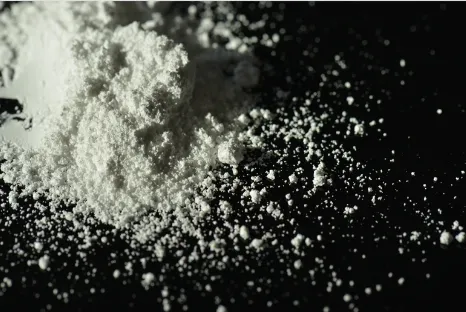Feb . 04, 2025 00:37
Back to list
mica varieties
Exploring Mica Varieties An Expert Guide to Their Properties and Uses
With a smaller iron content, phlogopite mica ranges from yellow to reddish-brown and is noted for its elasticity and toughness. The mineral is an integral part of the automotive and aerospace industries due to its use in composite materials, where it adds reinforcement, making resins more resilient while maintaining lightweight properties. The mineral’s thermal and electrical insulation qualities are also exploited in manufacturing electrical insulation for high voltage cables. Applications in the Cosmetics Industry Mica varieties, especially muscovite, have garnered significant attention in the beauty industry. Their reflective and refractive properties provide cosmetic products with the glow and shimmer that consumers desire. Mica's naturally occurring colors and sheen can create eyeshadows and other makeup products that produce an iridescent effect without being too harsh on the skin, capitalizing on its non-toxic and skin-friendly properties. Natural and Synthetic Mica What’s the Difference? The growing demand for sustainable and eco-friendly products has led to developing synthetic mica, also known as fluorphlogopite. Synthesized to have fewer impurities, synthetic mica offers a healthier alternative to natural varieties, specifically in cosmetics where purity and stability are paramount. While synthetic mica offers a cleaner aesthetic appeal with consistent quality, its production process rivals the intrinsic value of natural mica, emphasizing ethical extraction practices. Environmental and Ethical Considerations The extraction of mica is marred by significant environmental and ethical challenges, notably in regions where mica mining supports local economies but often under unsafe labor conditions. Responsible sourcing practices and increased awareness have prompted companies to implement transparent supply chains, ensuring that the procurement of mica does not come at the expense of human welfare or ecological balance. Organizations such as the Responsible Mica Initiative are working towards these goals by promoting responsible extraction and fair labor practices. In conclusion, understanding the specific properties of different mica varieties elevates their usability across an array of industries. Their contribution goes beyond aesthetics and conductivity—they play a critical role in sustainable development and technological advancement. Companies and consumers alike bear the responsibility of ensuring their mica sources respect both the environment and the communities involved in their production, supporting a future where minerals serve as a foundation not just for industry, but for global equity and sustainability.


With a smaller iron content, phlogopite mica ranges from yellow to reddish-brown and is noted for its elasticity and toughness. The mineral is an integral part of the automotive and aerospace industries due to its use in composite materials, where it adds reinforcement, making resins more resilient while maintaining lightweight properties. The mineral’s thermal and electrical insulation qualities are also exploited in manufacturing electrical insulation for high voltage cables. Applications in the Cosmetics Industry Mica varieties, especially muscovite, have garnered significant attention in the beauty industry. Their reflective and refractive properties provide cosmetic products with the glow and shimmer that consumers desire. Mica's naturally occurring colors and sheen can create eyeshadows and other makeup products that produce an iridescent effect without being too harsh on the skin, capitalizing on its non-toxic and skin-friendly properties. Natural and Synthetic Mica What’s the Difference? The growing demand for sustainable and eco-friendly products has led to developing synthetic mica, also known as fluorphlogopite. Synthesized to have fewer impurities, synthetic mica offers a healthier alternative to natural varieties, specifically in cosmetics where purity and stability are paramount. While synthetic mica offers a cleaner aesthetic appeal with consistent quality, its production process rivals the intrinsic value of natural mica, emphasizing ethical extraction practices. Environmental and Ethical Considerations The extraction of mica is marred by significant environmental and ethical challenges, notably in regions where mica mining supports local economies but often under unsafe labor conditions. Responsible sourcing practices and increased awareness have prompted companies to implement transparent supply chains, ensuring that the procurement of mica does not come at the expense of human welfare or ecological balance. Organizations such as the Responsible Mica Initiative are working towards these goals by promoting responsible extraction and fair labor practices. In conclusion, understanding the specific properties of different mica varieties elevates their usability across an array of industries. Their contribution goes beyond aesthetics and conductivity—they play a critical role in sustainable development and technological advancement. Companies and consumers alike bear the responsibility of ensuring their mica sources respect both the environment and the communities involved in their production, supporting a future where minerals serve as a foundation not just for industry, but for global equity and sustainability.
Prev:
Next:
Latest news
-
Transforming Surfaces with Mica-Enhanced Paints in Coatings and DecorationNewsJul.02,2025
-
The Ultimate Guide to Mica-Based Luminous Colors with Pearlescent PigmentNewsJul.02,2025
-
The Critical Role of Mica in Industrial Applications in Welding and Oil FieldsNewsJul.02,2025
-
Revolutionizing Automotive Aesthetics with Modified Plastics Pearlescent PigmentsNewsJul.02,2025
-
The Secret with Mica Powder for Cosmetics Behind Radiant, Natural MakeupNewsJul.02,2025
-
Enhancing Performance in Polymer Applications with Mica Powder for RubberNewsJul.02,2025
Products categories









